Related sites:
Newsletter: Perspectives on Power Platform
Company: Niiranen Advisory Oy
 There are no more Microsoft Convergence events held in Europe, but luckily the eXtreme CRM organization has stepped in to arrange a bi-annual conference where all the Dynamics CRM professionals can meet up and share information & thoughts on what’s happening around the product and the surrounding ecosystem. Last year in Berlin was the first time I attended the eXtreme CRM conference and this year it was time to head down south to Rome for eXtreme CRM 2013. Here’s my travel report from the event, focusing on the product roadmap details that were revealed and the direction that Microsoft Dynamics CRM seems to be heading towards, based on my interpretation.
There are no more Microsoft Convergence events held in Europe, but luckily the eXtreme CRM organization has stepped in to arrange a bi-annual conference where all the Dynamics CRM professionals can meet up and share information & thoughts on what’s happening around the product and the surrounding ecosystem. Last year in Berlin was the first time I attended the eXtreme CRM conference and this year it was time to head down south to Rome for eXtreme CRM 2013. Here’s my travel report from the event, focusing on the product roadmap details that were revealed and the direction that Microsoft Dynamics CRM seems to be heading towards, based on my interpretation.
The opening keynote by Bob Stutz, corporate vice president of Microsoft Dynamics CRM, was a somewhat unusual appearance compared to the traditional Microsoft way of highlighting their past achievements and future opportunities. From the European viewpoint, the typical US style keynotes often go over the top in building up hype for the success of the products, but Bob came onto the stage with a different kind of a message. Basically he apologized for all the problems that have surrounded Dynamics CRM recently: the delay of cross-browser support, CRM Online performance/reliability issues and the sad saga of recent Update Rollups being pulled.
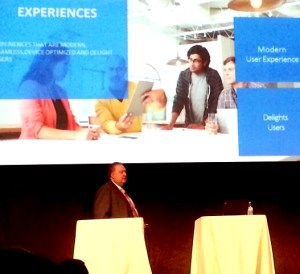 I think most of the MS partners in the room had shared the pain from these issues, especially when having to explain them on a day-to-day basis while working with customers. In the software business it’s of course nothing unheard of that such problems may occur, but there’s been an elevated sense of frustration recently with the lack of information given to partners on what’s going on at Microsoft. Communication is the most effective cure in recovering from such events and I bet that it would have been far easier for all parties if there had been more transparent exchange of information on each of these issues earlier on, but it’s good to see the top management acknowledge this now and hopefully do what is necessary to straighten these things out.
I think most of the MS partners in the room had shared the pain from these issues, especially when having to explain them on a day-to-day basis while working with customers. In the software business it’s of course nothing unheard of that such problems may occur, but there’s been an elevated sense of frustration recently with the lack of information given to partners on what’s going on at Microsoft. Communication is the most effective cure in recovering from such events and I bet that it would have been far easier for all parties if there had been more transparent exchange of information on each of these issues earlier on, but it’s good to see the top management acknowledge this now and hopefully do what is necessary to straighten these things out.
One thing that Bob Stutz promised to change was to return the Update Rollups back to pure hotfix packages instead of vehicles for new feature delivery that they’ve turned into after Microsoft adopted the agile release policy for Dynamics CRM shortly after the 2011 version came out. What this means in practice is that MS will need to come up with a new delivery vehicle for introducing the new features into on-premise CRM environments at least once a year. While this can potentially improve the stability of those environments, the gap between CRM Online and on-premise feature release schedule can also grow even larger as a result of this, which could introduce it’s own challenges through an increased platform fragmentation.
This time last year Microsoft made a big announcement of their upcoming “CRM Anywhere” prodcut offering. Following the aforementioned turn of events, the cross-browser support got eventually delayed up until Polaris / Update Rollup 12 while the mobile strategy was gradually revised, scrapping their planned partnership with CWR Mobility and opting to develop in-house mobile apps instead. Individual pieces of news around the mobility offering have become available during the past fall and now at eXtreme CRM 2013 Rome the following mobility roadmap slide was presented:
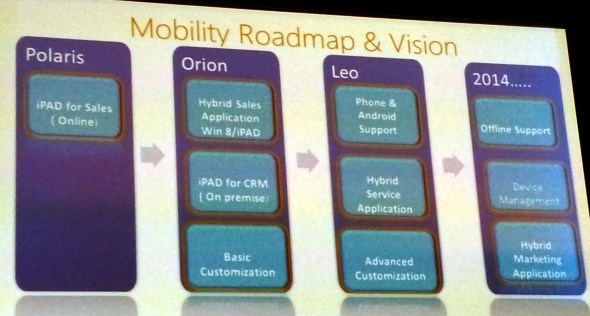
From this slide and the accompanying presentation I was able to pick out the following pieces of data:
One thing that Bob was emphasizing during the keynote was Microsoft’s decision not to charge additional licenses for access to these mobile and tablet applications. Choosing to take the longer route of build vs. buy in the mobile CRM gives MS a wider range of options to adjust their commercial offering to market needs, but the prolonged period of uncertainty means that many customers will also be postponing their investment decisions on mobile CRM deployment until they have facts available on what level of functionality is going to be baked into the core platform. At the same time ISV’s like Resco and more recently also CWR Mobility are working hard to be able to offer a HTML5 platform for developing customized mobile and tablet apps for Dynamics CRM for those customers who need to equip their mobile workforce with CRM solutions already today.
Update 2013-02-16: Microsoft partners can now download the Microsoft Dynamics CRM Mobility Roadmap slide deck from PartnerSource (login required).
The new “Flow” UI of Dynamics CRM has been rolled out to existing CRM Online customers. This has caused both a lot of excitement as well as anxiety, since the new design and integrations (Bing Maps, Yammer etc.) are very tempting to be demonstrated as the next generation user experience, but the feature set of Polaris takes away many of the standard customization options that rely on form event scripting. I’ve covered the Polaris new features & gotchas in a previous post, in case you haven’t had a chance to dig deeper into the updated CRM Online version yet. Just to repeat once more what I’ve been trying to emphasize ever since latest Statement of Direction document was released: on-premise customers won’t get the new UI with Update Rollup 12, it arrives in the Orion release.
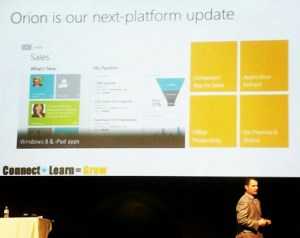 With that in mind, let’s get the big news out of the way before digging any deeper: Orion is not an Update Rollup or even Service Update type of a release, it is the next major version of Dynamics CRM. In his closing keynote Bill Patterson pretty much confirmed that it would be called “Microsoft Dynamics CRM 2013” (or 2014) for the on-premise customers. Not a whole lot of other details were shared, apart from the fact that the target release date is in Q3 2013. Although Bob Stutz was hesitant on giving any dates in his speech, July was mentioned more than once, but whether that refers to general availability or CRM Online is anybody’s guess as of now.
With that in mind, let’s get the big news out of the way before digging any deeper: Orion is not an Update Rollup or even Service Update type of a release, it is the next major version of Dynamics CRM. In his closing keynote Bill Patterson pretty much confirmed that it would be called “Microsoft Dynamics CRM 2013” (or 2014) for the on-premise customers. Not a whole lot of other details were shared, apart from the fact that the target release date is in Q3 2013. Although Bob Stutz was hesitant on giving any dates in his speech, July was mentioned more than once, but whether that refers to general availability or CRM Online is anybody’s guess as of now.
Before that, we’ll have time for another star in the spring sky: Gemini. Yes, it looks like there will be even more frequent releases for CRM Online than previously communicated. Gemini arrives in Q2 2013 and will focus on bringing the Marketing Pilot features acquired last October available to Dynamics CRM users. The feature set was shown in a very brief run through of slides, since the network issues that plagued the whole eXtreme CRM 2013 Rome event held at Marriott Park Hotel forced Bill to skip the live demo and resort to screenshots instead. Not much can be said about what to expect from Marketing Pilot at this stage, but here are some facts I picked up:
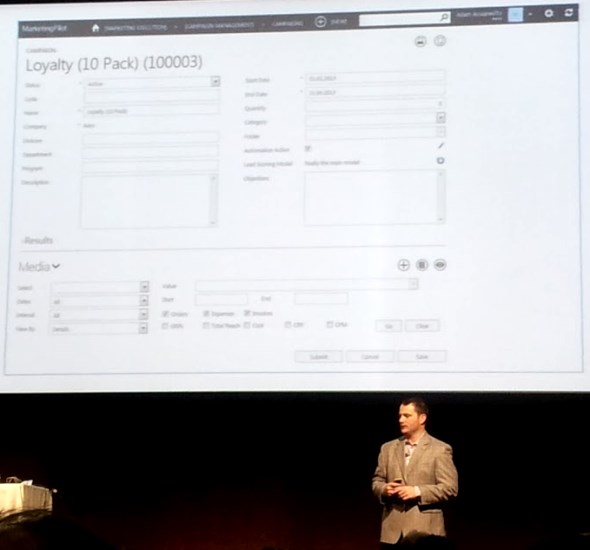
Already back in WPC 2012 Bill Patterson told that the Ribbon UI introduced in CRM 2011 would eventually be replaced with a more simple menu structure. Polaris has given us the new Command Bar on the process forms, but the option of “Switch to Classic” still enables the user to access the old style of forms with the full Ribbon. Starting from Orion, things are about to change, as there will be no classic forms available at all.
Apart from a few default entities that may not yet get upgraded in Orion, all the other ones and also custom entities will get automatically migrated into using the new process forms. This is different from Polaris, where an additional form was introduced alongside the existing ones and the customer had to re-customize the form fields and layout to match their business processes. Deploying the Orion upgrade will not require this step, since presumably every existing form will open in the process mode. The details are not yet clear, but presumably adding all the new form components introduced in Polaris (Tab Control etc.) onto existing forms should also become possible.
From an ISV point of view the question of “where do we display our custom buttons in Orion” of course immediately comes to mind. Starting from Orion the Command Bar will be customizable and this will in fact be done using the familiar Ribbon XML. Compared to the overly simplified version we have in Polaris, presumably there will be a way to access additional core platform functionality (run dialogs, workflows, reports etc.) and also custom actions, but the real estate given to these will likely shrink considerably.
Subgrid ribbon functionality is something that I suspect will be reduced, as this has been one of the greatest sources of confusion when training users to work the CRM 2011 UI. The new subgrids in Polaris forms offer just a basic add new/existing functionality (which is broken in many ways, but that’s a topic for another post), which might be the direction that MS will push the Orion UI. On a related note, when the question of editable subgrids was presented to the Dynamics CRM product team members, the answer was that this is something every Program Manger in the team would want to see, but it might get pushed back further than Orion, so don’t get your hopes up just yet.
Bob Stutz restated the message that MS has outlined in their latest statement of direction: Dynamics CRM future development will emphasize applications over platform functionality. In his words, when they analyzed the current state of the Dynamics CRM product, he concluded it to be “a platform & toolkit with little applications”. This approach has not always matched with the customer expectations of what a CRM product should deliver and has in practice made it difficult for MS to deliver a great user experience out of the box. Apps are what the user interacts with and ultimately finds useful and enjoyable. No one really loves a platform (except a few customizers and developers perhaps) but many of us have apps on our smartphones and tablets that we get addicted to using. That’s the position the Dynamics CRM product team is aiming at with their redesign efforts.
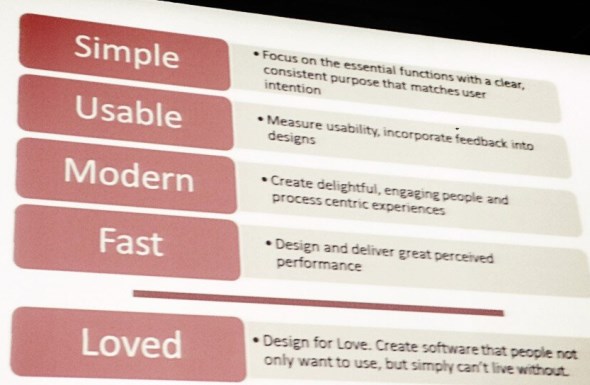
So, is XRM dead then? Probably not, but no longer in the center of Microsoft’s attention. Although Polaris imposed severe limitations on form customizability, the intention in Orion is to support all existing form scripts, as long as they use the CRM 2011 SDK (4.0 script support will be removed). The form Process Control does not replace existing workflow-based sales processes, rather it works alonside them if the system customizer designs the solution that way. The Process Control can be minimized, form components can be hidden, custom web resources can be added etc., so the core platform functionality for XRM apps should still be there.
Many partners and on-premise customers dislike the fact that the new Polaris functionality cannot be developed for or tested in local dev machines or servers. This is the first time in 2 years that the different deployment models have such a big gap in available functionality. If you ask Microsoft’s opinion on this, they don’t see it as a problem but rather an advantage. The ability to deploy new features into the cloud environments that they control brings a higher level of agility that MS is determined to fully leverage in their future product releases.
According to the Dynamics CRM product team members, upgrading CRM Online with the new features first gives MS a better chance to detect the last critical bugs that have plagued many of the recent Update Rollups. It also serves in building confidence towards the new version for on-premise customers, since MS has already deployed the same update into their own servers in the cloud before the customer is faced with the decision of deploying the same update.
Looking at the new features and integrations that have been announced recently, even strategic acquisitions like Skype and Yammer are not being rushed into the hands of on-premise customers. Instead they are held in a “CRM Online only” status for ~6 months prior to being made available to large enterprise customers who are mostly still in the on-prem world. It’s part of the “all in the cloud” story, of course. Instead of large upgrade projects and selling software maintenance, Microsoft would prefer everyone to move into a world where updates and features are gradually yet continuously rolled out to all customers, who in turn generate a recurring revenue stream from CRM Online & Office 365 subscriptions.
Speaking of which, CRM Online’s migration to and integration with Office 365 has resulted in several nasty gaps in the user experience of signing up for a trial organization. If the past Windows Live ID based implementation was somewhat tricky, the Office 365 experience can be downright incomprehensible for potential customers who simply want to see what Dynamics CRM looks like in practice. Bob Stutz told that this issue is being taken care of and a new sign-up experience for CRM Online should arrive in a couple of months time. Combine this with the updated UX coming up for all Microsoft online services and working with multiple MS cloud apps might become a bit easier in the near future.

I think that’s enough typing for one blog post. Next it’s time for me to start going through the slides from the various expert sessions, to ensure I can hold on to my newly awarded title “certified smart as*”. Hope to see many of you next year again at eXtreme CRM 2014!
Thank you for this great summary, I really hope the CRM team know what they are doing…
Thanks so much Jukka – that was incredibly useful and well timed for me. Given how much MS seem to have stuffed things up with Polaris and not communicated nearly enough the removal of the classic forms in Orion makes me very nervous indeed.
The ever widening gap between on-premise and on-line is also rather worrying. If you really can turn new stuff off in a new organisation to match on-premise or an older on-line organisation where you’ve delayed deployment of new features that’s fine. Unfortunately Polaris seems to have already demonstrated that you can’t always (e.g. the new lead qualification).
Recent events don’t inspire much confidence and unfortunately I can only imagine this situation getting worse at the moment, not better…
Thanks Jukka, really great summary!
It increasingly looks like we need to rely on informed consultants such as yourself for updates/summaries about MSCRM, as communications from Microsoft are either non-existent or over-hyped (CRM Anywhere) or post-event (rollup UR12).
I share the comments above and find myself in two minds at the moment: on the one hand excited about the new process oriented approach (as think that this what most end users want) but on the other hand, very cautious about communicating any news from MSCRM.
Personally, I would prefer if MS promised less and delivered more.
Thanks, Martin.
Thanks, Martin. Although the official release information from MS is often limited and delayed, I do kind of understand that their barrier for sharing any details of upcoming versions and updates must be quite high. I have the benefit of not being liable to anyone if the pieces of news, rumors and predictions I publish on my blog turn out to be incorrect.
Great Post… very informative!
Great post – Thanks for your work.
just fyi, I read this info about the roadmap posted one week. You probably already read it. http://blogs.perficient.com/microsoft/2013/02/next-4-releases-of-microsoft-dynamics-crm/
Ivan
[…] Jukka Niiranen has written a great article here. He also wrote a great recap of eXtreme CRM in Rome a few months ago. You can find that here. […]